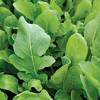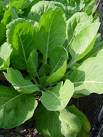 When we relax the parasympathetic system has an opportunity to function fully.
When we relax the parasympathetic system has an opportunity to function fully.
The hormones activated by the sympathetic are deactivated by the parasympathetic, and so the system slows down body processes except those that are suppressed by the sympathetic i.e. the digestive system, the skin functions. The following changes occur when a person totally relaxes;
- Blood to the heart and skeletal muscles decreases and is redistributed to inactive organs such as the gut and skin
- Metabolism slows
- Respiration slows
- Pupils constrict
- Digestion speeds up
- Blood coagulation time is lengthened
- The inflammation response is restored ---- immune system
- The central nervous system is taken out of the arousal state
Our societies set norms of behaviour and standards to which some individuals perceive they are expected to adhere. In this competitive atmosphere of increased activity, and the accumulation of wealth and consumer goods, the wellbeing of the individual can be completely overlooked.
Lowering standards of living and simplifying life is not something that individuals are encouraged to do. Gaining material wealth becomes a priority that distracts the individual mind away from simplicity and whole health.
The importance of relaxation in our society is vital to health and well being and body "ease". A body in a constant state of arousal eventually becomes exhausted and "dis-eased".
The digestive system is unable to do it's job and people suffer from heart burn, stomach and duodenal ulcers, constipation, haemorrhoids, irritable bowel syndrome, ulcerative colitis etc etc. The thickened blood with extra cholesterol and overworked heart leads to heart disease stroke heart attacks and blood clots. People are more vulnerable to infection, the healing process is prolonged, and cancer increases all the time.
Knowing what is happening to our bodies can greatly improve our awareness of the harm that occurs when we ignore our need to switch off the "fight or flight" response and regain balance.
Becoming aware of our attitudes, behaviours, feelings and thoughts brings more choice into our lives. Becoming aware of our bodies and how stress manifests physically enables us to counteract the effects of stress. Knowing ourselves leads to understanding our needs. At differing times we will need different solutions here are some you might like to try. Give your whole self to these activities and observe yourself before, during and after.J A warm / hot bath with bubbles or oils. Listen to music or read a book or just lie, feeling the luxury.
J Breathing deeply, consciously, feel that on each inward breath you breath in calm, on each outward breath you breath out tension.
J Sit and look out of a window at something in the distance let your attention relax.
J Stretch out from toes to finger tips feel that you are stretching out the tension in your muscles.
J SMILE inside and out
J Put on loud energetic music and dance about or do the "wood chopper"
J Sing along to a record, or on your own at the top of your voice ( this is good on a long journey in the car)
J Go for a walk alone and notice everything, walk somewhere of beauty and stop and stare frequently, slow down inside and out.
J Perform a simple movement very, very slowly with your eyes closed, repeat and each time become slower.
J Sit in candle light and watch the flame with a soft focus
J Be aware of a mundane activity, e.g. washing the dishes. Give the activity all your attention as you would a complicated procedure.
J Have a therapeutic massage
J Spend time looking at an item e.g. a flower, a piece of fruit, concentrate with effort close your eyes and visualise the object.
J Repeat a word over and over to yourself; e.g. calm, strong, relax, smile, or whatever you need.
J Be aware of how people respond when you ask for / take time out for yourself, and observe your own internal and external reaction to this response
J Write a poem / story / paint a picture / bake a cake. Create something for the sake of the activity and not for the end result.
J Write a list of things you would like to do in the next; month, quarter, 6mths, year.
J Start a new hobby / interest
J Be aware of your posture when standing and walking
J Start responding to people as you would prefer to do rather than your habitual response
J Say yes to something you would normally say no to.
J Be aware of being defensive to peoples opinions, experiment with being open and accepting possibilities. "you could be right"
J Look in the mirror and say "I love you"
Link


























